Synthesis and Third⁃order Nonlinear Optical Properties of N⁃(6⁃hexanol)⁃2⁃methoxy⁃8⁃nitroazophenyl Carbazole
ZHONG Quan⁃jie,ZHENG Jian,ZHANG Lin,LUO Xuan
(1.Research Center of Laser Fusion,China Academy of Engineering Physics,Mianyang 621999,China;2.University of Science and Technology of China,Hefei 230026,China)
Abstract:A new compound N-(6-hexanol)-2-methoxy-8-nitroazophenyl carbazole(HMNAC)was synthesized by electrophilic substitution reaction and post-azo-coupling reaction,and the structure of HMNAC was characterized by IR,1H NMR and 13C NMR.The molecular structure of HMNAC was optimized at the B3LYP/6-31G(d)level.Single point energy was calculated at the MP2/6-31G(d)level.The relative energy ERbetween cis-trans isomers of HMNAC was found to be 52.43 kJ·mol-1.The thirdorder nonlinear optical properties of HMNAC were studied by Z-scan technique under nanosecond excitation at 532 nm.Closedaperture curve has revealed that HMNAC has self-defocusing effect.Open-aperture curve indicated that both saturated absorption and reverse saturated absorption exist in HMNAC.The second-order hyperpolarizability γ of HMNAC was 2.59×10-29esu,and the figure of merits(FOMs)reached 1.5.
Key words:N-(6-hexanol)-2-methoxy-8-nitroazophenyl carbazole(HMNAC);density functional theory;cis-trans isomers;Z-scan;third-order nonlinear optical properties
1 Introduction
The synthesis and development of new energetic materials continue focusing on the nitrogen-containing heterocyclic compounds with high density,high heat of formation and low sensitivity[1-2].In order to ensure the safety of energetic materials in storage and transportation,these materials must have low sensitivity[1-2].Azo compounds have both cisisomer and trans-isomer,usually in the form of transisomer[3].Under the action of light and heat,azo compounds have the characteristics of reversible cistrans isomerization[3].Upon external stimulation,the rapid conversion of the trans-to the cis-configuration converts the excitation energy into the internal energy of the cis-configuration,and reduces the energy obtained in the subsequent recovery from cistrans configuration,which to some extent avoids the decomposition ofsuch energetic compounds[4].Therefore,azo energetic compounds can generate self-desensitization effect by means of the cis-trans isomerization process[4].Using the self-desensitization effect of azo energetic compounds,high safety explosives and rocket propellants can be designed[4].In addition,many nonlinear optical materials can be prepared by using the cis-trans conversion of azo compounds under light conditions[3].Azo nonlinear optical materials have attracted many interests because of their potential applications in all-optical signal processing,optoelectronic devices,all-optical switching,optical image processing,optical information storage,optical limiting,optical waveguides and high speed optical communication networks[5-9].In the past few decades,organic materials have been intensively investigated since they exhibit large thirdorder nonlinear optical susceptibilities χ(3)compared to the traditional inorganic nonlinear optical materials such as barium metaborate,Lithium triborate and lithium niobate crystal[10-12].In particular,organic nonlinear optical materials can be designed at the molecular level in order to achieve the best nonlinear optical properties[12].The study of the excellent third-order nonlinear optical materials and new structure are a very challenging task[13-14].The relationship between the molecular structure and nonlinear optical properties has been studied deeply[15].
Previous research had discovered that the πconjugated system was more efficient than other electron structure in exhibiting nonlinear optical effects[16-18].Electron donorand electron acceptor could also enhance nonlinear optical effects[13-14,16].Thus,molecule units containing highly delocalized π-conjugated system and strong electron acceptor and electron donor would lead to larger second-order hyperpolarizabilities γ.A series of compounds containing identical π-bridge and electron-donating groups,but with different electron-withdrawing groups were recently reported[19].Research showed that the thirdorder nonlinear optical properties were enhanced by increasing electron-withdrawing ability[19].The third-order nonlinear optical susceptibilities χ(3)and the second-order hyperpolarizabilities γ can reach up to 6.03×10-13esu, 2.01×10-31esu, respectively[19].Based on our own previous works,N-6-hydroxy-hexyl-4-azophenyl-carbazol was synthesized and studied.Theoretical calculations and experimental results showed that N-6-hydroxy-hexyl-4-azophenylcarbazol was an excellent third-order nonlinear optical material,and its third-order nonlinear optical effects derived from the charge-transfer excitation and the local excitation where the charge-transfer excitation plays a leading role[20].Moser et al.pointed out that the design and development of organic nonlinear optical materials should use intramolecular electron transfer to form the charge transfer state[21].In the family of organic nonlinear optical materials,azobenzene and carbazole have received much attention[22].Azobenzene and carbazole contain larger π-conjugated electronic systems and stronger intramolecular electron transfer[23].The electron-rich structure makes it easy to introduce various functional groups in the electrophilic substitution reaction to adjust the nonlinear optical properties[24-25].However,in order to meet the actual needs for low-power photonics applications,the nonlinear optical effects and FOMs of organic materials needed to be further improved.
In this article,we reported HMNAC prepared via electrophilic substitution reaction and post-azocoupling reaction.The relative energy ERbetween the trans-isomer and cis-isomer was calculated at the MP2/6-31G(d)//B3LYP/6-31G(d)level.The standard Z-scan technique was utilized to investigate the third-order nonlinear optical properties of HMNAC.Further,the nonlinear optical effects and FOMs were calculated and analyzed.
2 Experiments
2.1 Materials and Measurements
2-Methoxycarbazole and 6-bromo-1-hexanol were purchased from Tokyo Chemical Industry.Dimethyl sulfoxide(DMSO),benzyl triethyl ammonium chloride,sodium hydroxide,ethyl acetate,anhydrous sodium sulfate,dichloromethane,4-Nitroaniline,hydrochloric acid,sodium nitrite,sodium dodecyl benzenesulfonate and petroleum ether were obtained from Chengdu Chron Chemicals.Dimethyl sulfoxide was chromatographical grade.All chemicals used without further purification.Heating stirrer was an IKA magnetic heating stirrer.Infrared spectra were obtained from KBr pellet on a PerkinElmer Spectrum One infrared spectrometer in the range of 4000-400 cm-1.1H NMR and13C NMR were obtained in DMSO-d6on a Bruker AV600 NMR spectrometer.
2.2 Synthesis and Characterization
N-(6-hexanol)-2-methoxy carbazole was firstly prepared via electrophilic substitution reaction form 2-methoxy carbazole.Then,HMNAC was prepared through post-azo-coupling reaction form N-(6-hexanol)-2-methoxy carbazole.The synthetic rounte of HMNAC is summarized in Scheme 1.
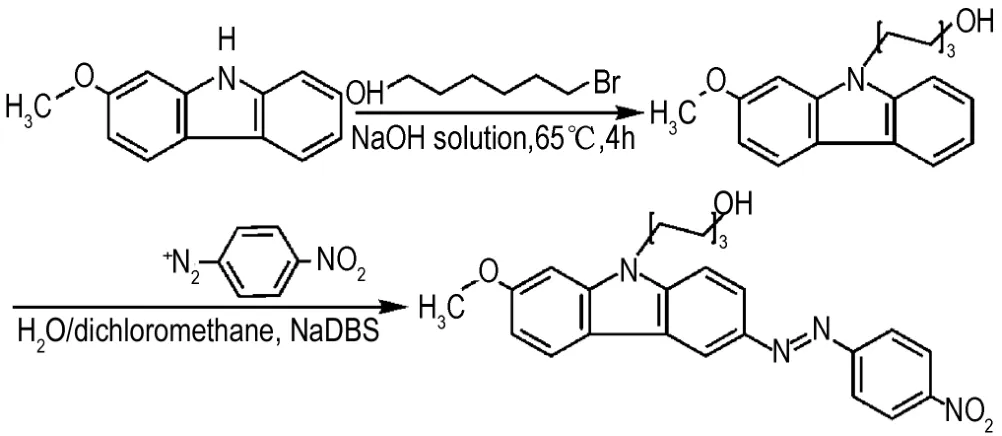
Scheme 1 Synthetic route of HMNAC
2.2.1 Synthesis of N ⁃(6⁃hexanol)⁃2⁃methoxy Carbazole
2-methoxy carbazole(1.97 g,10 mmol),6-bromo-1-hexanol(1.57 mL,12 mmol)and benzyl triethyl ammonium chloride(150 mg) were dissolved in DMSO(40 mL).To the stirred solution,sodium hydroxide(2.0 g,50 mmol),as a concentrated aqueous solution,was added and magnetic stirring was continued for 4 h at 65 ℃.After the reaction,the mixture was cooled to room temperature.The mixture was extracted with ethyl acetate(50 mL).The combined organic layer was then washed with water,dried over anhydrous sodium sulfate,filtered,and concentrated under reduced pressure.The residue was purified by silica gel column chromatography(eluent,dichloromethane)to afford 2.67 g(9 mmol,90%) of the target compound N-(6-hexanol)-2-methoxy carbazole.IR(KBr,ν/cm-1)3389,3049,2996,2932,2857,1630,1601,1499,1464,1246,1200,1169,815,746;1H NMR(600 MHz,DMSO-d6)δ:8.01(d,J=7.8 HZ,H),7.99(d,J=8.4 Hz,1H),7.50(d,J=8.4 Hz,1H),7.35(t,J=7.8 Hz,1H),7.14(t,J=7.8 Hz,1H),7.09(d,J=1.8 Hz,1H),6.80(dd,J=2.4 Hz,9.0 Hz,1H),4.38(t,J=5.4Hz,1H),4.33(t,J=7.2 Hz,2H),3.88(s,3H),3.33(q,J=6.0 Hz,2H),1.75(m,2H),1.30(m,4H),1.30(m,4H);13C NMR(150 MHz,DMSO-d6)δ:158.97,141.73,140.54,124.31,122.98,121.02,119.45,118.85,116.80,108.38,106.86,93.28,62.62,55.68,42.83,32.48,28.74,26.99,25.49.
2.2.2 Synthesis of HMNAC
4-Nitroaniline(1.12 g,8 mmol)was dissolved in a solution of concentrated hydrochloric acid(5 mL)in water(80 mL).The mixture was cooled in an ice bath until the temperature was below 5℃.Then a solution containing sodium nitrite(0.66 g,9.6 mmol)in water(3 mL)was added slowly to the 4-nitroaniline solution.The mixture was allowed to magnetic stirring in the ice bath for 30 min.While the mixture was still kept in the ice bath,sodium dodecyl benzenesulfonate(0.2 g)was added.A solution of N-(6-hexanol)-2-methoxy carbazole(2.38 g,8 mmol)in dichloromethane(60 mL) was added to the above mixture.The resultant mixture was stirred vigorously at room temperature for 24 h.After the reaction,the mixture was concentrated under reduced pressure,filtered.The residue was purified by silica gel column chromatography(eluent,petroleum ether/ethyl acetate=1∶1)to afford 1.78 g(4 mmol,50%)of the target compound HMNAC.IR(KBr,ν/cm-1) 3412,3049,2935,2859,1630,1599,1519,1461,1334,1235,1134,860,744;1H NMR(600 MHz,DMSO-d6)δ:8.50(s,1H),8.44(t,J=2.4 Hz,1H),8.43(t,J=1.8 Hz,1H),8.17(d,J=7.8 Hz,1H),8.04(t,J=1.8 Hz,1H),8.03(t,J=1.8 Hz,1H),7.60(d,J=8.4 Hz,1H),7.44(t,J=8.4Hz,1H),7.37(s,1H),7.23(t,J=7.8 Hz,1H),4.44(t,J=7.2 Hz,2H),4.32(t,J=5.4 Hz.1H),4.12(s,3H),3.35(t,J=5.4Hz,2H),1.82(m,2H),1.36(m,4H),1.23(m,2H);13C NMR(150 MHz,DMSO-d6)δ:158.16,156.14,147.23,145.02,141.09,136.25,125.73,124.97,123.19,122.86,120.28,120.04,115.96,109.76,107.81,92.82,60.47,56.49,42.31,32.35,28.22,26.18,25.16.
2.3 Quantum Chemistry Calculation
Density functional theory and second-order Meller-Plesset perturbation theory have been utilized to study the self-desensitization effect of HMNAC.The geometric structure of cis-trans isomers of HMNAC was calculated at the B3LYP/6-31G(d)level.Harmonic vibrational frequencies were calculated to confirm the stable configurations and transition states at the B3LYP/6-31G(d)level.Zero-point vibrational energy(ZPE) was obtained by frequency calculation.Single point energy calculation was carried out at the MP2/6-311G(d)level.All calculations are based on Gaussian 09 package.
2.4 Third⁃order Nonlinear Optical Measurements
The third-order nonlinear optical properties were measured by Z-scan using the 4 ns laser pluses generated by the DAWA-S Pulse Q-switched Laser system with the repetition rate of 10 Hz and the wavelength of 532 nm.The experiments were performed in dichloromethane solutions using a 2 mm-thick quartz cuvette at room temperature.The concentration of HMNAC was 6.67×10-4mol·L-1.The laser beam was focused on the sample by a lens of focal length 250 nm.The radius of the beam waist ω0was calculated to be 19 um.The Rayleigh length z0=πω0/λ was calculated to be 2.13 mm,which is greater than the thickness of the sample cuvette.The reference beam energy,probe beam energy were measured simultaneously using an energy ratio meter(Rj-7620).The distance between the detector and the focus of the lens was far enough to satisfy the farfield approximation.Before measuring this sample,the third-order nonlinear optical properties of a standard sample(ZnSe)were observed.
3 Results and Discussion
3.1 Synthesis
N-(6-hexanol)-2-methox y carbazole was obtained by via electrophilic substitution reaction form 2-methoxy carbazole.In order to improve the yield of target compound,it is necessary to control the mole ratio of 2-methoxy carbazole to 6-bromohexanol and reaction time.The optimum synthesis conditions were mole ratio of 2-methoxy carbazole to 6-bromohexanol 1∶1.2,and the reaction time 4h.As for the synthesis of HMNAC,a post-functionalization method was selected.The benzene ring system is susceptible to electrophilic attack and couple with diazonium salts,but the carbazole system is not as easy as that on the benzene ring system[24].For the carbazole system,it was reported that the azo coupling could be made more efficient in a two-phase system in the presence of the phase transfer catalyst sodium dodecyl benzenesulfonate[26].Dichloromethane and water were selected as the reaction medium in our work for its excellent solubility to the reactants.Both the bulkiness of the introduced functional group and steric effect of the azo coupling product would make the electrophilic substitution to take place exclusively at the 8-position of N-(6-hexanol)-2-methoxy carbazole.Target product HMNAC is red powder and easily soluble in common organic solvents like chloroform,dichloromethane,tetrahydrofuran and dimethyl sulfoxide.
3.2 Molecular Structure and Relative Energy of Trans⁃cis Isomers
The optimized geometries of trans-HMNAC and cis-HMNAC were shown in Figure 1 and the atomic labels were marked out.There is no imaginary frequency in frequency calculation which indicated that we get the stability configuration of the local minimum in the potential energy surface.
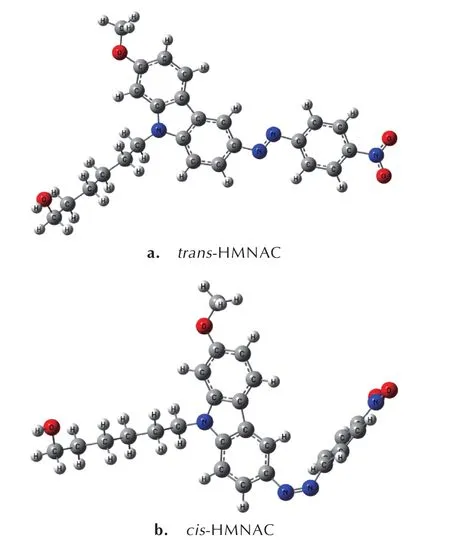
Fig.1 Optimized molecular structures of HMNAC
In order to improve the energy accuracy,single point energy calculation was carried out at the MP2/6-31G(d)level.Relative energy ERof cis-trans isomers was obtained after ZPE correction.Total energy(E),zero-point vibrational energy(ZPE)and relative energy(ER) of trans-HMNAC and cis-HMNAC were shown in Table 1.Compared to cis-HMNAC,trans-HMNAC has a lower energy.Normally,HMNAC exists mainly in the form of trans-isomer.Upon external stimulation,the rapid conversion of trans-to cis-HMNAC converts the excitation energy into the internal energy of the cis-HMNAC which avoids the decomposition of such energetic compounds.Relative energy ERbetween trans-HMNAC and cis-HMNAC reached 52.43 kJ·mol-1.HMNAC exhibits low sensitivity.

Table 1 Total energy(E),zero-point vibrational energy(ZPE)and relative energy(ER)of trans-HMNAC and cis-HMNAC
3.3 Optical Properties
The linear absorption spectrum is shown in Figure 2.HMNAC exhibited two strong bands in UVVis beyond 300 nm.The band at near-ultraviolet is owing to excitation from π→π*of the carbon-carbon bond,while the band at the visible spectral region is related to excitation from n→π*of the nitrogen-nitrogen bond.
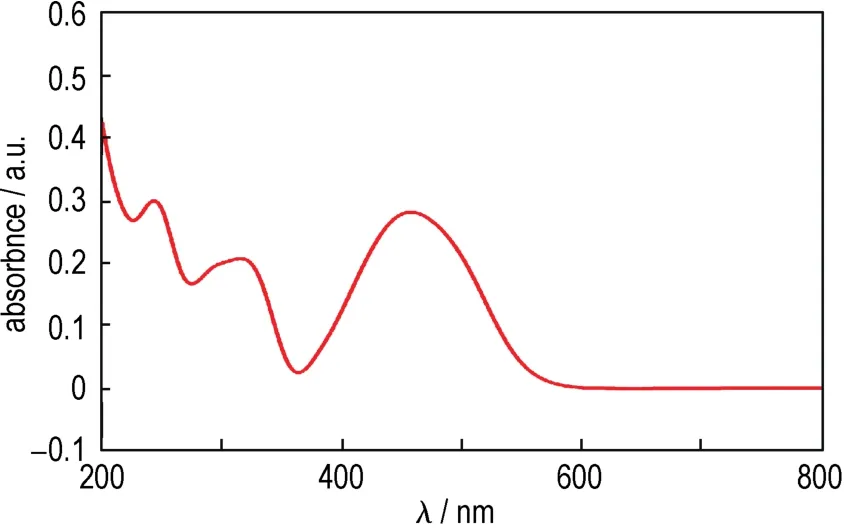
Fig.2 UV-visible absorption spectrum of HMNAC
3.4 Third⁃order Nonlinear Optical Properties
Z-scan measurements were performed at 532 nm as shown in Figure 3a and Figure 3b.Figure 3a and Figure 3b exhibit the open-aperture and closed-aperture Z-scan curves,respectively.
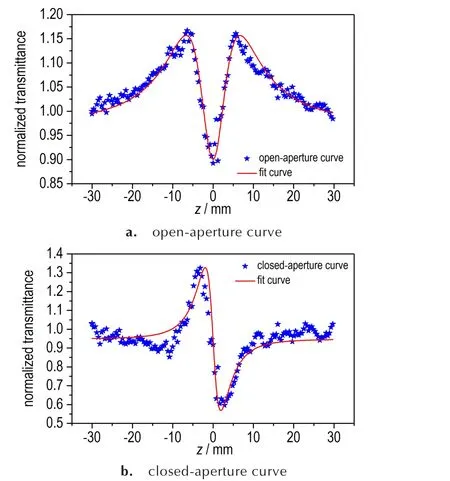
Fig.3 Z-scan curve of HMNAC
The irradiance at focus of the laser beam I0was calculated as 2.21×10-12W·m-2.The peak-to-valley configuration of the closed-aperture curve indicated that the refractive-index change is negative,exhibiting a self-defocusing effect[27].The M-type curve indicated that both saturated absorption and reverse saturated absorption exist[28].The saturated absorption is caused by the transition from ground state to excited state.The reverse saturated absorption is mainly caused by the transition between excited states.
The energy levels with different structures of organic molecules can be described by a five-level model including singlet and triplet states[29].Figure 4 showed the five-level model of organic molecular system,in which S0is the ground state;S1and S2are the first excited state and upper excited state in singlet,respectively;T1and T2are the first excited state and upper excited state in triplet,respectively;and every electronic energy level contains many vibra-tional or rotational energy levels.When a beam of light with a frequency of ω irradiates the molecular system,the photons would be absorbed by molecules in the ground state,which causes the transition of molecules from 0,to 1'with absorption cross section σ0.The lifetime of energy level 1'is very short.It relaxes rapidly downward to lower energy level 1,and then to energy level 0 and 3 through non-radiative transition and intersystem crossing,respectively.At room temperature,the probability of stimulated radiation of organic molecules is very small and can be neglected.For organic molecules,the intersystem crossing time τSTis less than τ1and nanoseconds,which is mainly because of the nanosecond regime of pulse duration in our measurement.Meanwhile,the intersystem crossing time τTis longer than nanoseconds.The five-level model is simplified as an effective four-level system with S0,S1,T1and T2states.The saturated absorption is determined by the balance of the number of particles between triplet T1and ground state S0and the reverse saturated absorption is determined by the balance of the number of particles between triplet state T2and triplet state T1.
The nonlinear absorption coefficient β can be obtained from a best fitting performed on the experimental data of the open-aperture Z-scan with the equation[30]:

Where I0is the intensity of beam at focus,Leff=(1-exp(-α0L))/α0is the effective length,α0is the linear absorption coefficient,L is the thickness of the sample,z the longitudinal displacement of the sample from the focus and z0is the Rayleigh diffraction length.
To obtain the nonlinear refractive index n2,we can fit the experiment data of the closed-aperture Z-scan with the equation[30]:

WhereΔΦ0=kn2I0Leffis the on-axis nonlinear phase shift at the focus,k=2π/λ is the wave vector,x=z/z0.
The third-order optical nonlinear susceptibility χ(3)of materials can be written as[30]:

Where n0is the linear refractive index of the sample,ω is the angular frequency of the light field and c is the velocity of light in vacuum.
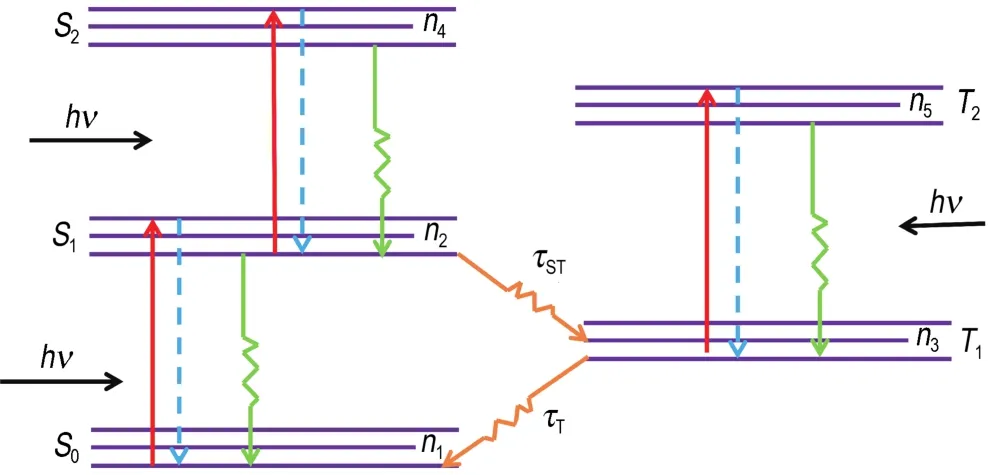
Fig.4 The five-level model of organic molecular system
The second-order hyperpolarizability γ of the molecules can be written as[19]:

Where N is the number of molecules of unit volume;L is the local field correction factor,which is defined as L=[n(ω)2+2]4/81,where n(ω)is the refractive index.
The obtained results are summarized in Table 2.

Table 2 Summary of nonlinear optical properties of HMNAC
The third-order optical nonlinear susceptibility χ(3)of HMNAC was calculated as 3.34×10-11esu.The interaction of intramolecular valence bond is stronger than that of intermolecular Van der Waals forces,so coupling interaction is weak between electronic structure of the single molecule and the surrounding molecules.Each molecule can be regarded as an independent polarization source.The coupling of adjacent molecules is mainly realized by the local field.Therefore,we can establish the equivalence relation between micro and macro properties.The second-order hyperpolarizability γ of HMNAC was cal-culated as2.59×10-29esu through equation(6).Compared with the second-order hyperpolarizability γ of carbon disulfide as a standard reference sample for nonlinear optical study,HMNAC exhibits excellent third-order nonlinear optical properties.In particular,FOMs is defined as FOMs=n2/βλ[31].With the date,n2=6.53×10-17m2·W-1,β =8.17×10-11m·W-1and λ =532 nm,FOMs was calculated to be 1.5,which is critical in all-optical switching device.
4 Conclusions
We have synthesized a new compound HMNAC and its structure was characterized by IR spectrum,1H NMR spectrum and13C NMR spectrum.The transcis isomerization was studied based on the density functional theory and the second-order Meller-Plesset perturbation theory.Relative energy ERbetween trans-HMNAC and cis-HMNAC reached to 52.43 kJ·mol-1.HMNAC exhibits low sensitivity and is expected to be used in high safety explosives and rocket propellants.The third-order nonlinear optical properties of HMNAC were investigated using Z-scan technique.Second-order hyperpolarizability γ and FOMsare 2.59×10-29esu and 1.5,respectively.HMNAC is a good candidate for the development of low-power,high-contrast all-optical switching device.

